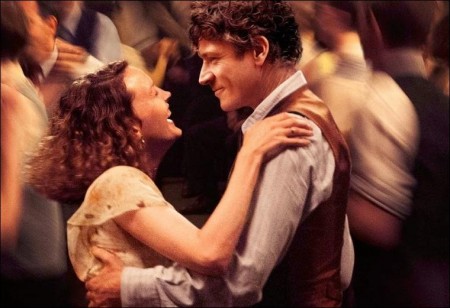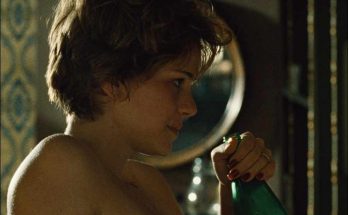Taglines: Where anything goes and everyone belongs.
Jimmy’s Hall Movie Storyline. In 1932, after ten years in the United States, Jimmy Gralton returns to his native Ireland to help his mother run the family farm. A new government is in power in Ireland ten years after the end of the Civil War. To meet the needs of the young people of County Leitrim, Jimmy, in spite of his reluctance to cause upset to his old enemies (the Church and the local landowners), decides to reopen the ‘Hall’, a young people’s centre, free and open to all, where the local young people meet to dance, study or talk. Success comes quickly, but the growing influence of Jimmy and his radical ideas is not to the taste of everyone in the village.
The film centres around political tensions between the Catholic church, the state and the republican movement to which Jimmy through his pre-emigration history is connected. Jimmy’s political alignment is central to the film, he suffers for being a free-thinker and committed to the liberation of ordinary people through education and also by having experience from America of Jazz (the rhythms and passions of “darkest Africa” are warned against in one church sermon warning of the perils of The ‘Hall’). Jimmy is aligned to communism by the communist support and encourage participation in the study and dancing that evolve as key activities at the ‘Hall’.
The power and hypocrisy of the church is demonised in the film by aligning it to the beating by her father of a free spirited young girl who laughs at the priest while she is named and shamed for attending a dance at the Hall in a church service. The pious religion of Jimmy’s mother is also contrasted against her love of learning and ability to explore popular non-religious literature, which has aligned her family to Communism for liberation of working people. It is clear throughout the film that Jimmy and his mother are not aligned to any struggle above and beyond the necessities of their local community; however, this does bring them into involvement with attempting to prevent an eviction of a family who are displaced from their home.
This eviction and the assertive re-instatement of the family along with Jimmy’s support and oratory to those gathered at the reinstatement draw him to the attention of the Gardaí. This starts a chain of events which ends in Jimmy’s expulsion from Ireland based on the flimsy premise that he holds a US passport and that political agitators have previously been expelled from the country on such grounds. The lack of a fair trial is emphatically explained in the film by a speech given by Jimmy’s mother at a rally surrounding the expulsion.
Jimmy’s Hall is a British-Irish drama film directed by Ken Loach. The film tells the story of the deportation to the United States in 1933 of Jimmy Gralton, who led the Revolutionary Workers’ Group, a precursor of the Irish Communist Party, in Leitrim. It stars Irish actor Barry Ward, along with Simone Kirby, Jim Norton and Denise Gough.
The title refers to a rural dance hall built by Gralton to expound his political views. This film is co-produced by 20th Century Fox and Universal Pictures in the UK, Viacom in the US, ITV Films (a film division of ITV Studios), Sony, Talent Films, a now defunct company Talent TV, Pizza Hut, Entertainment One, Yahoo! Films, Film4 and 5Film (a division of Channel 5), It was selected to compete for the Palme d’Or in the main competition section at the 2014 Cannes Film Festival.
Jimmy’s Hall (2015)
Directed by: Ken Loach
Starring: Barry Ward, Francis Magee, Aileen Henry, Simone Kirby, Shane O’Brien, Denise Gough, Aisling Franciosi
Screenplay by: Paul Laverty, Donal O’Kelly
Production Design by: Fergus Clegg
Cinematography by: Robbie Ryan
Film Editing by: Jonathan Morris
Costume Design by: Eimer Ni Mhaoldomhnaigh
Art Direction by: Stephen Daly
Music by: George Fenton
MPAA Rating: PG-13 for language and a scene of violence.
Studio: 20th Century Fox
Release Date: July 3, 2015
Views: 73





